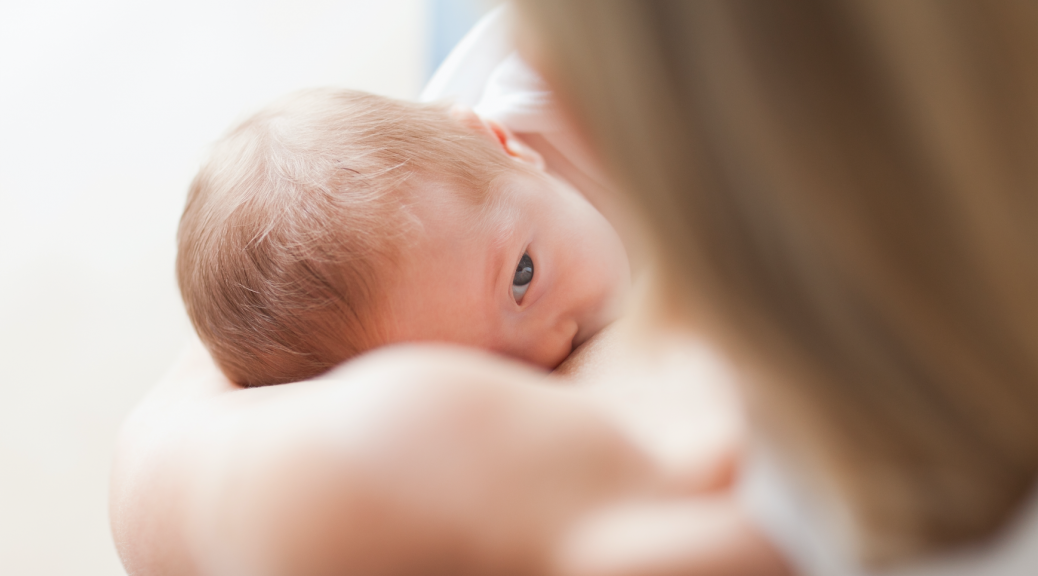
Squeaky breathing at the breast: laryngomalacia
Today, let’s talk about when a baby makes a squeaky sound when breastfeeding and laryngomalacia. We recently received the following consultation from a breastfeeding mother.
“My one-month-old baby makes a lot of noise when he nurses. It’s like he has a whistling sound from his throat. He is putting on weight, and everything seems to be going well, but that noise seems weird to me, and I don’t know what it is. Can you help me?”
Babies often make a lot of noise when nursing; this is a common infant behavior. Most of the noises are related to the tongue and the swallowing of milk. Sometimes, the noise is located outside the oral cavity, and we hear it a little “down” in the neck area. When the area where you notice the noise comes from is the neck, we speak of laryngomalacia.
What is laryngomalacia?
It is a genetic condition in the area of the voice box that usually manifests with a squeaking noise, like a whistle, when the baby breastfeeds, cries, or is on their tummy.
What is the voice box?
Before we move on, let’s do a little anatomy lesson. The voice box is part of the respiratory system and is located between the pharynx and the trachea. They are located in the neck. To make it easier for you to notice, if you touch your neck, look for the hard area (the Adam’ apple): this is the voice box (larynx). This structure is formed by cartilage rings that give it robustness. In addition, at the top, we find another structure called the epiglottis. The epiglottis acts as a drawbridge that prevents any object from reaching the airway. In cases of laryngomalacia, the epiglottis is also a little softer than usual and collapses when the baby breathes in. Therefore, there are different types of laryngomalacia, depending on where they are located within the voice box.
But what happens when the cartilage ring structure is not as hard as it should be?
This is when we speak of laryngomalacia. It is genetic and happens because the upper part of the voice box is flaccid or soft, and the cartilage rings have not hardened. When the baby nurses, the air passes through the larynx and collapses at some point, depending on which area is affected.
Is the voice box of a child different from that of an adult?
The newborns’ and young children’s voice boxes have a higher position than those of adults. This allows them to breastfeed more easily. During the first three years of life, the voice box grows very fast. Thanks to this growth, the vocal cords are able to make the appropriate movements that later allow them to speak.
Is laryngomalacia serious?
This is usually a benign condition that affects quite a few newborns. In most cases, it is only a very noisy situation that does not affect the baby in any way.
Do we need to do something to make it go away?
In most cases, it disappears without treatment. Between 12 and 18 months, the cartilage or epiglottis usually hardens permanently, and the sound disappears. Only in severe cases is further treatment necessary.
In the following video, you can hear the sound of a baby with laryngomalacia breastfeeding.